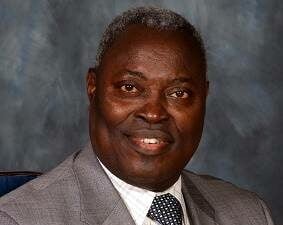What is the body for?
The body is for the beatific vision. This may come as a surprise to many. For all its preoccupation with the human body, our age is particularly confused on this question of what the body is for. The godless among us somehow manage to think too high and too low of the body.
On the one hand, many put otherworldly pressure on the body, insisting that making it look or feel a particular way is the sum and substance of the good life. Such preoccupation is manifest among the anxiously health-obsessed no less than the gender-dysphoric teenager, the fastidious fashionista no less than the “body positivist.” It’s what lies behind the willingness to invest a small fortune in injections and tucks and tattoos and surgical alterations. The body, in these cases, bears the burden of determining one’s identity — a burden it was never intended to bear.
On the other hand, the same trends ironically betray an expendable view of the human body as it is. The liberty exercised to make inordinately expensive and invasive alterations presupposes that there is no natural givenness to the human body. We wouldn’t call the attempt to beat a screwdriver into the shape of a wrench a respect for the screwdriver’s nature.
Evangelical Confusion
Unfortunately, evangelical Christians have also struggled at times to make sense of the goodness of the body. Operating with a deficient anthropology, many Christians have replaced the hylomorphism of Thomas Aquinas and so much of the Christian tradition with a Cartesian dualism. (Hylomorphism views the human as a composite of body and soul, such that the soul is the substantial form of the body, and the body is the matter of the soul. Cartesian dualism, coined after the philosopher René Descartes, conceives of the human being as something like a ghost in the machine: The soul is the person, whereas the body is a mere husk.) For most, this shift was unintentional — we made no conscious decision to replace Aquinas with Descartes — but it does have consequences.
One such consequence is a depreciated view of the body. The body, we are tempted to think, is at best a useful tool for the soul; at worst it is an inconvenience to bear throughout this life. Might the all-too-common cliché of the overweight pastor, the popular conceptions of heaven as a bodiless cloud-palace, and exclusively cerebral approaches to battling habitual sin have this impoverished view of the body as a common source?
“We were formed for bodily communion with God.”Thankfully, Holy Scripture offers a corrective to our errors. The body is neither the foundation of all meaning and value, nor the expendable canvas upon which to paint one’s true self, nor the inconvenient mark of our fallen state — a burdensome exoskeleton we will one day shed. Rather, the body is essential to our humanity. The body is so essential, in fact, that we creatures will not experience the fullness of the beatific vision without it!
What Kind of Vision?
The mention of the beatific vision in this context calls to mind a longstanding theological debate: Will the beatific vision be ocular (i.e., involving the eyes and, by consequence, the human body) or intellectual (i.e., occupying the intellect, a faculty of the soul that does not require the body to exist)? Not a few theologians throughout the years have appealed to Thomas Aquinas in defense of the latter position. This, however, is misleading.
Granted, Aquinas does argue that the essence of the beatific vision is intellectual — the vision is the soulish apprehension, in perfect creaturely knowledge, of God’s essence. Such an apprehension is what the soul has ever longed for, and the satiation of this basic craving in the beatific vision is the very definition of happiness, the final repose and rest of the soul’s communion with God. In fact, since we humans were formed for such fellowship by God, the beatific vision is the telos — the realization of the fundamental goal — for humanity. It is also the highest point of God’s glorification in us: Climactically, in the beatific vision, he is most glorified in us when we are most satisfied in him.
But what about the body? Is it altogether unnecessary? After all, Aquinas argues that while the body cannot exist without the intellect, the intellect can still exist without the body (in the intermediate state, for example, when believers are absent from the body and present with the Lord, according to 2 Corinthians 5:8). And since the essence of the beatific vision is intellectual, and since “complete happiness is the vision of the divine essence,” Aquinas can go so far as to say that “it does not hinge on the body, and the soul can be happy without it” (Summa Theologica I.4.5). There you have it: The body is superfluous to the beatific vision, according to Aquinas, right?
Not so fast. It’s important to remember that the primary consequence of Aquinas’s discussion here is to defend the notion that the saints in the intermediate state come to experience a kind of repose and satiation of their soulish desire for communion with God — which goes a long way toward explaining why Paul can consider such a bodiless state to be “far better” than our present embodied experience (Philippians 1:23). But this is not the same as saying that the body is irrelevant for the beatific vision.
Bodily Beatitude
Aquinas recognizes — and so must we — that the body is nonnegotiable for the fullness of the beatific vision. This is a point often missed because we don’t attend to the distinction he makes between esse (being or essence) and bene esse (well-being). To put the matter crassly, the intellect, at bare minimum, does not need the body. This is because in addition to the powers the intellect exercises through the body, it also has the capacity for bodiless apprehension. But is that satisfactory for our imagination of the eschaton: the question of what is minimally required for us to exercise our intellects in the way God intended? Is that it?
The question of the esse of the beatific vision asks what is minimally required for this vision to be truly experienced — and that is a useful and necessary question, insofar as it goes. It means, for one thing, that we can celebrate that our departed loved ones in Christ are happier now than they ever were in this life. But no theologian worth his salt — Aquinas included — would be content for us to come short of reflecting on the bene esse of the beatific vision. Reinhard Hütter makes this point well:
The resurrection body, Aquinas would respond, perfects beatitude, not intensively, by contributing to the depth, or intensity of beatitude, but rather extensively, contributing to its extension into the resurrection of life of the comprehensor and thereby expanding beatitude to the embodied mode of existence bringing about comprehensive well-being (bene esse). (Bound for Beatitude, 44; italics original)
You could put it like this: The intellectual object of our beatific vision is none other than the essence of God himself. But God never intended for us to have strictly intellectual vision. He gave us bodies with the express purpose of enriching our intellectual vision with an embodied mode of contemplation: bodies beholding bodies (i.e., the created realm). So, while the intellectual object of our beatific vision will never be more or less than God’s essence, the ocular (i.e., bodily) object of our beatific vision will be God in all his created effects — all the created realm — chiefly and most emphatically in the created human face of Jesus Christ (2 Corinthians 4:6).
While the bodily object of our vision will not add to the esse of the beatific vision (what could enrich God, after all?), it will deepen and round out our creaturely experience — the bene esse — of the beatific vision in an embodied mode of existence.
Embodied to Behold
The body is nonnegotiable for the beatific vision because the beatific vision is for humans, and bodies are irreducibly essential to humanity. To be human is to be embodied. And this means that the doctrines of (a) the resurrection, (b) the new heavens and the new earth, and (c) the beatific vision rise and fall together. Job, in prophetic clarity, does not contradict himself when he says, “After my skin has been thus destroyed, yet in my flesh I shall see God” (Job 19:26). How is it possible for one’s skin to be dissolved, only to then see God in one’s flesh? It isn’t possible without the eventual resurrection of that previously dissolved flesh.
Our creaturely relationship between our bodies and souls is not a temporary oddity we experience in this life only. Granted, the precise reality of the beatified soul as the form of a resurrected body is a mystery we can’t comprehend — we are seeds speculating about what we will be like at harvest time (1 Corinthians 15:35–49). But since God made us as embodied souls and ensouled bodies, we can be sure that our bodies have just as much a future as our souls.
So, let us make our bodies neither more nor less than God intended. Let us respect and be grateful for the givenness of our bodies in light of the fact that they are us — not comprehensively so (we are more than our bodies) but essentially so (we are no less than our bodies). We were formed for bodily communion with God in Christ. And we will see him with resurrected bodily eyes. We can therefore confidently say with Job, “In our flesh, we shall see God.”

.jpeg)



















.jpeg)












 English (US) ·
English (US) ·